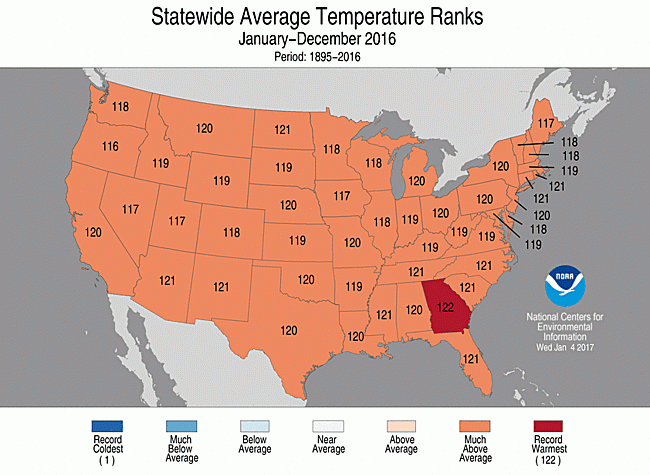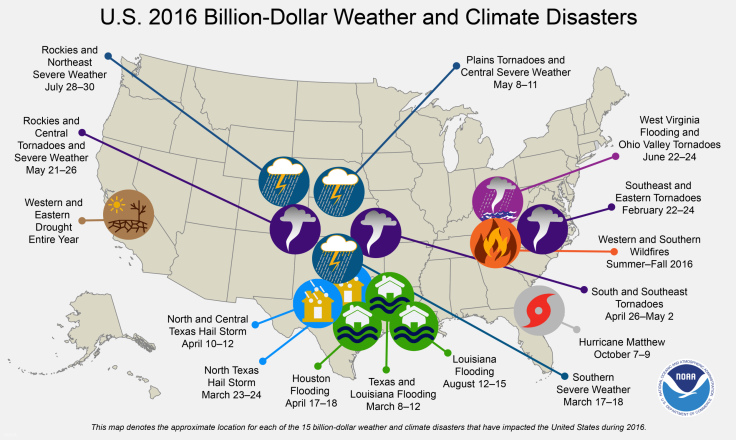2016 Was Second-Warmest Year On Record For US, NOAA Says Breadth Of Warming 'Unparalleled'

For the world as a whole, 2016 was a year many climate records were broken, and the U.S. was not spared either. According to a report released Monday by the National Oceanic and Atmospheric Administration (NOAA), the nation witnessed its second-warmest year on record in 2016, marking the 20th consecutive year when the annual average temperature in the contiguous United States was above the 20th century average.
Last year, the lower 48 states recorded an average annual temperature of 54.9 degrees Fahrenheit — 2.9 degrees above the 20th century average, and just 0.4 degrees below the highest annual average ever recorded in 2012. According to the NOAA, every state in the contiguous U.S. and Alaska experienced above-average annual temperatures, and all but Iowa, Maine, Nevada, Oregon and Utah had one of their warmest five years.

"The breadth of the 2016 warmth is unparalleled in the nation's climate history," NOAA remarked in its report. "No other year had as many states breaking or close to breaking their warmest annual average temperature. The warmest year on record, 2012, had more record warm states (26), but unlike 2016, states in the Northwest fell outside of their warmest decile of historical distribution."
Since 1895, the lower 48 states have observed an average temperature increase of 0.15 degrees Fahrenheit per decade — a clear indication that last year's climate readings, while skewed toward the warmer side by a record El Niño event, are part of a much larger trend.
Even Alaska — the country's only Arctic state — was not spared. In 2016, the state witnessed its third successive warmest year on record.
"For most of the year, Alaska 'baked', with record heat at the local and statewide level," NOAA said. "With a statewide record that dates to 1925 (92 years), Alaska had its second warmest winter, warmest spring, second warmest summer and a warmer-than-average fall."
Set against this backdrop, the U.S. also witnessed a record number of weather-related catastrophes and extreme weather and climate events in 2016. According to the NOAA, the country experienced 15 weather and climate disasters — including four inland floods, eight severe storms, one hurricane, and one drought that affected multiple areas — that claimed a total of 138 lives and caused $46 billion in damages. This is the second-highest number of disasters the U.S. has experienced in one year.

The U.S. is far from the only country witnessing record-breaking temperatures. Previous estimates have already suggested that in 2016, the global average temperature may have been up to 1.2 degrees Celsius higher than pre-industrial levels — bringing the planet perilously close to breaching the historic Paris climate agreement’s perhaps unrealistic target of limiting the rise to 2 degrees Celsius. Scientists have also voiced concerns over what may be in store for 2017, as President-elect Donald Trump — who once called climate change a hoax “created by and for the Chinese in order to make U.S. manufacturing non-competitive” — vowed, during his campaign, to “cancel” the climate treaty.
© Copyright IBTimes 2024. All rights reserved.






















